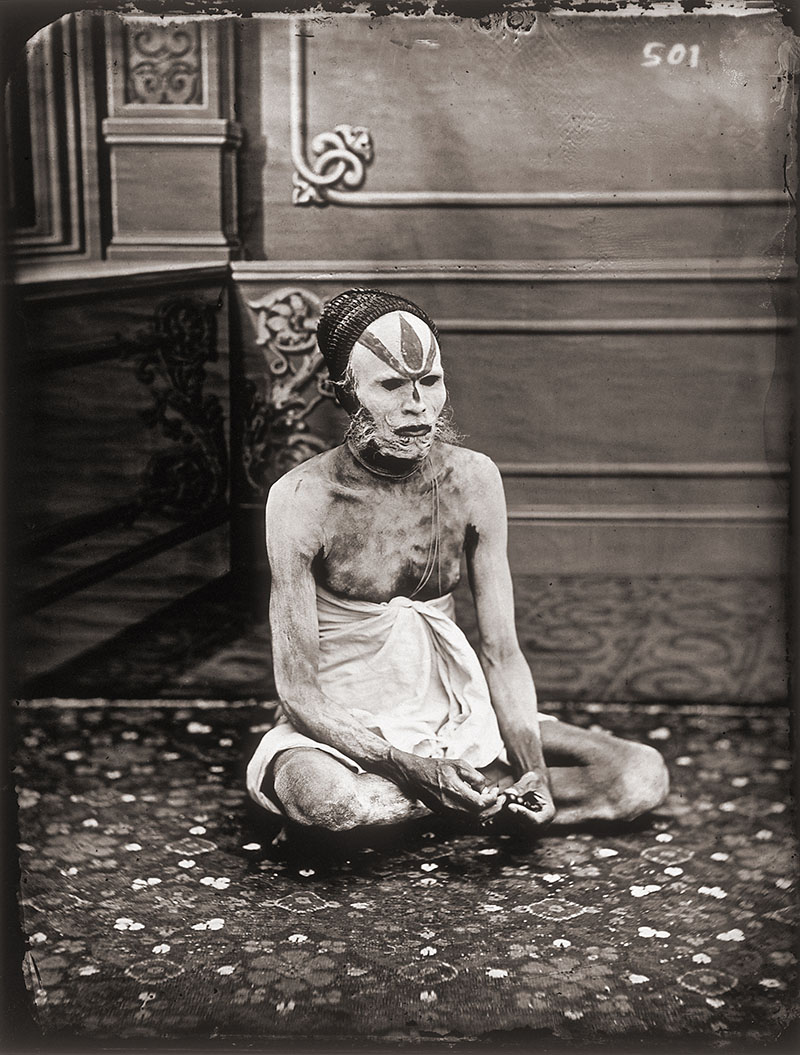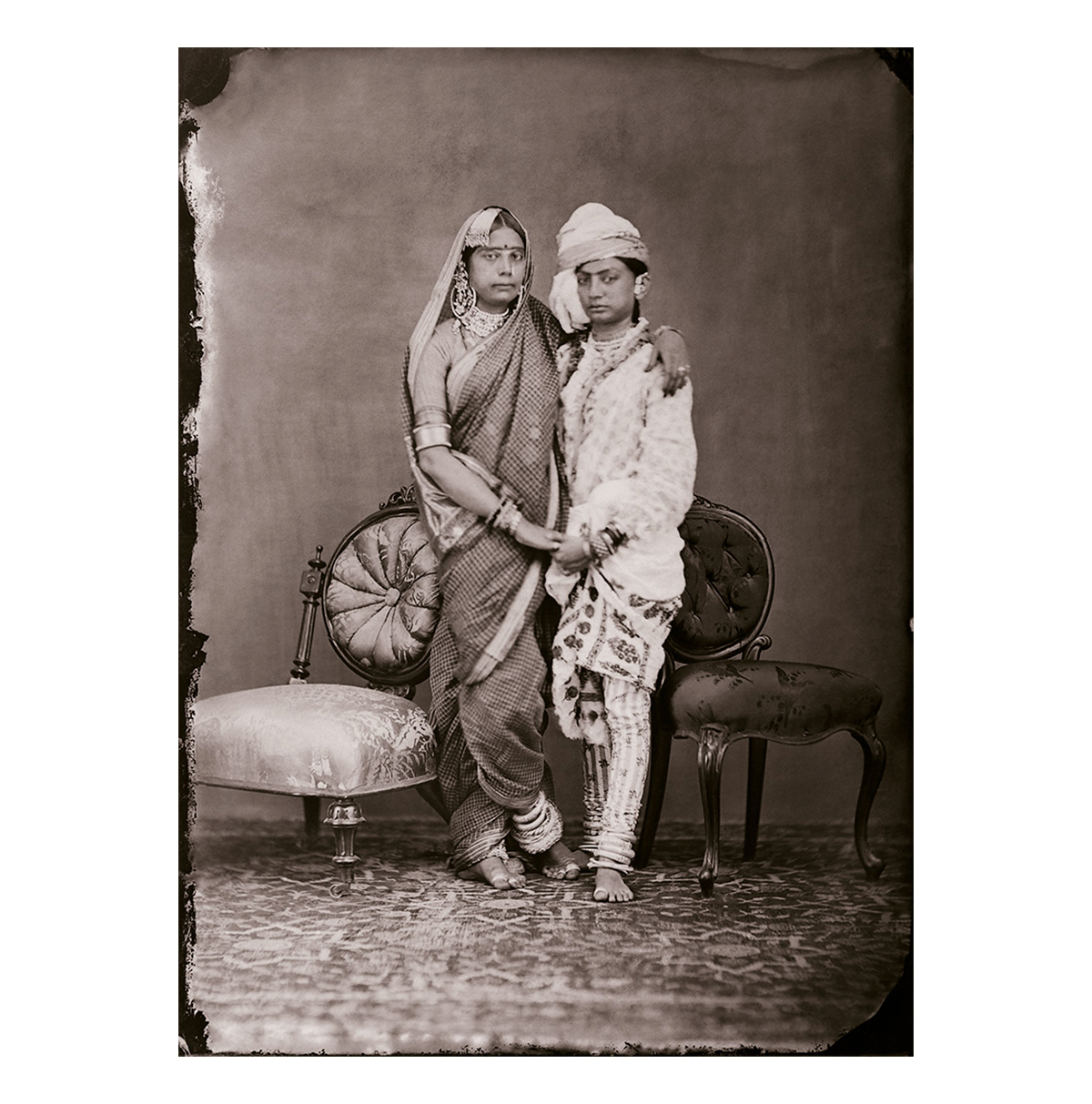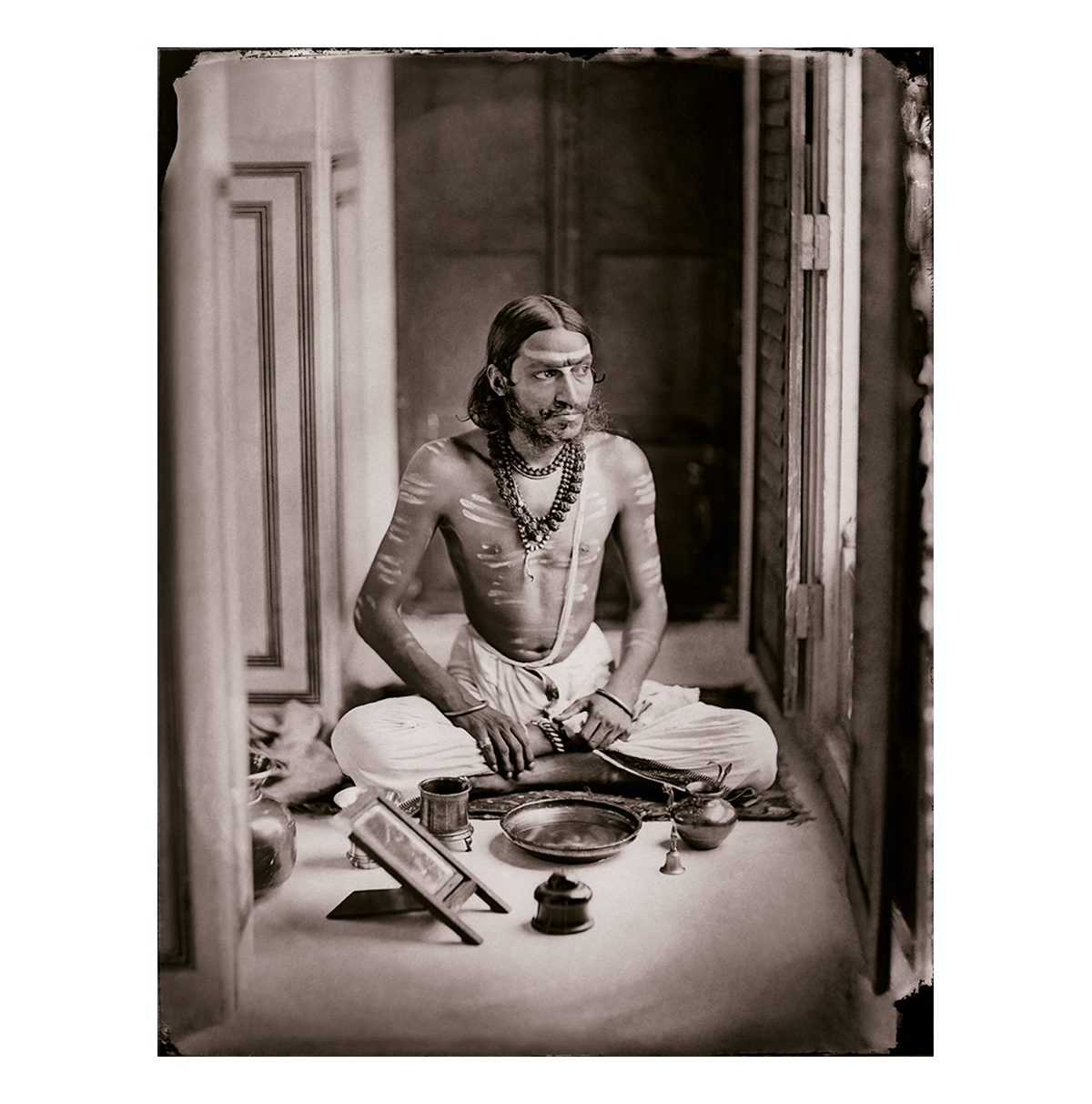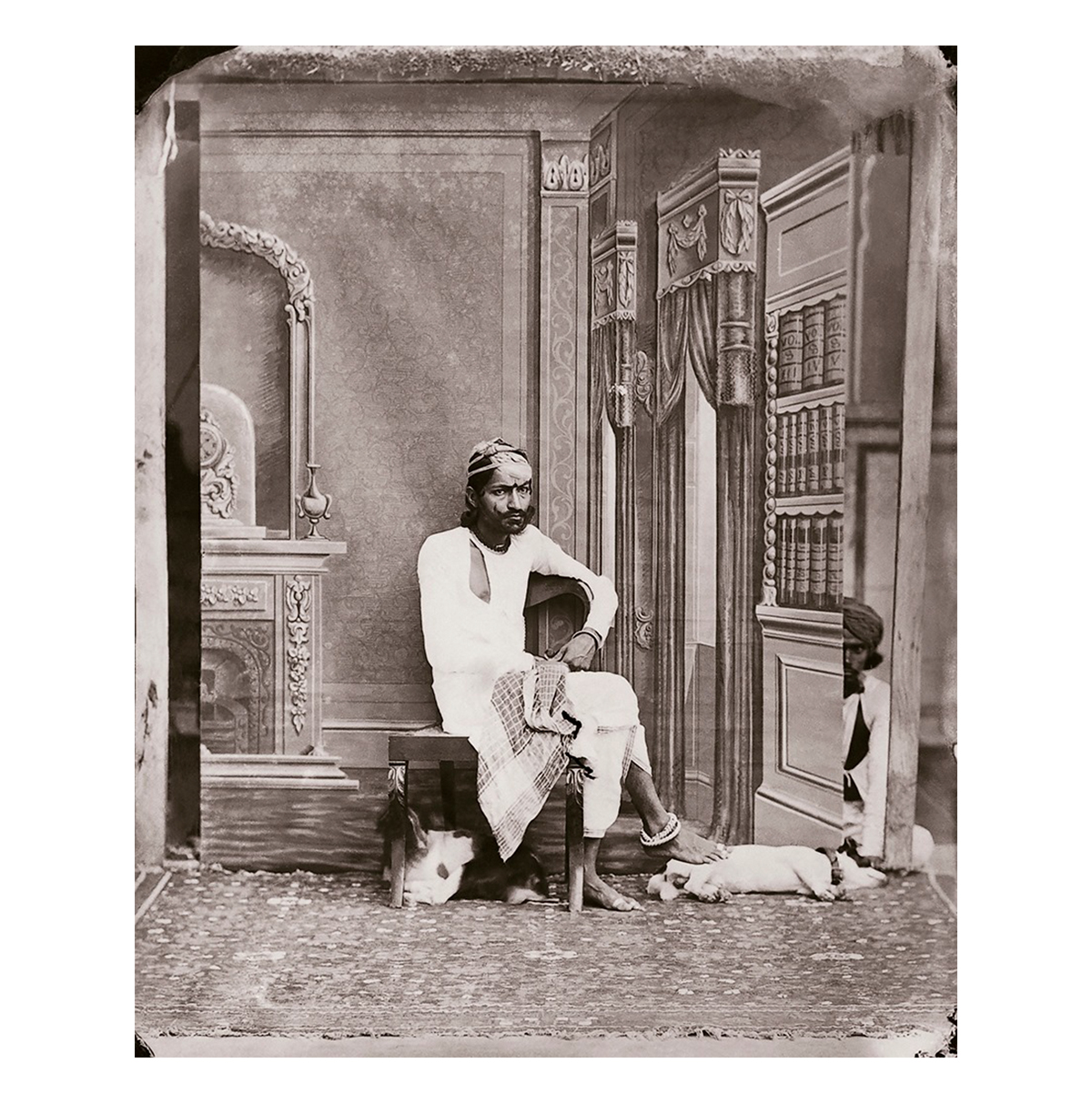Known for his photographic practice and pro-reform state policies, Sawai Ram Singh II was the Maharaja of Jaipur, reigning from 1851 until his death in 1880. Informally known as the “photographer prince of India,” he was an avid photographer, creating over six thousand individual photographs and nearly two thousand glass plate negatives throughout his life. He was also a lifelong member of the Bengal Photographic Society.
Ram Singh was born to Maharaja Jai Singh III of Jaipur. After his father’s death in 1835, he was appointed the successor, ruling through regency until 1851, when he formally ascended the throne as the Maharaja of Jaipur. He is believed to have learned photography from the British photographer T Murray, who visited Jaipur several times and was later appointed court photographer from approximately 1867–70. His passion for photography is evident from the personal studio at his court, called the photukhana or tasveer khana (meaning “the picture department”), where he housed his extensive collection of cameras and processing equipment and developed his images.
Ram Singh primarily made portraits of himself as well as Indian and European royalty visiting Jaipur. He is also known for his photographs of landscapes and architectural views across the country, including Agra, Varanasi, Lucknow and Calcutta, always carrying his equipment with him during his travels. His photographs of foreign men and women follow the conventional portrait format, but with the subjects posed against backgrounds he painted himself. He would also experiment with the photographs, often superimposing the subjects’ faces on different bodies.
Ram Singh is renowned for having photographed the women who resided in the zenana of the royal household, at a time when the women lived almost entirely out of public view and were rarely photographed. He used modes of representation similar to traditional Victorian portraiture. Some of these photographs show the women staring directly into the camera, with one image showing a woman dressed in men’s clothes and carrying traditionally male accessories such as a sword. He also occasionally showed his photographs to visitors, possibly with the aim of demystifying the zenanas. It is important to note that while his transgressions across the social divisions of his court were largely driven by aesthetic curiosity, the subjects were denied agency over their representation in the photographs, despite their royal status, and their names were never included in the final images.










